On Michael Myers actor Don Shanks’ 70th birthday, our absolute best wishes from HalloweenMovies and Trancas International Films and his Halloween 5: The Revenge of Michael Myers co-stars Danielle Harris, Wendy Kaplan and Tamara Glynn! Here’s to you, Don!
Don Shanks
Exclusive Interview: Halloween 5’s Wendy Kaplan Speaks! – Part 2
On the heels of the box office success of 1988’s Halloween 4: The Return of Michael Myers, series producer Moustapha Akkad was eager to expand the narrative of Haddonfield’s reinvigorated slasher (following the decidedly lackluster reception of its predecessor, the then maligned and now rather celebrated feature Halloween III: Season of the Witch). The result was Halloween 5: The Revenge of Michael Myers, a feature film directed by Swiss-born director Dominique Othenin-Girard.
Co-written by Girard and screenwriters Michael Jacobs and Shem Bitterman (following the director’s literal trashing of the original Bitterman script titled Halloween: The Killer Inside Me, which was intended as the follow-up), Halloween 5 was rushed into production in order to make its announced release date of October 13th, 1989. The outcome? A picture which proved polarizing for fans, and one which was received with far less fervor, both critically and financially, than its forerunner. Additionally, the narrative, which introduced audiences to the Cult of Thorn mythos, and which additionally was the victim of both reshoots and a post-production process which left entire sections on the cutting room floor, created some confusion within the Halloween fan base.
In part two of our recent interview series with Halloween 5’s Wendy Kaplan (see part one here), the actress talks the film, the rather infamous party scene at the hotel used to house the cast and crew, her offer to potentially appear in Halloween 6, her surprise at the truncated Haddonfield police station massacre as it appeared theatrically, and her thoughts on the flick thirty-one years later.
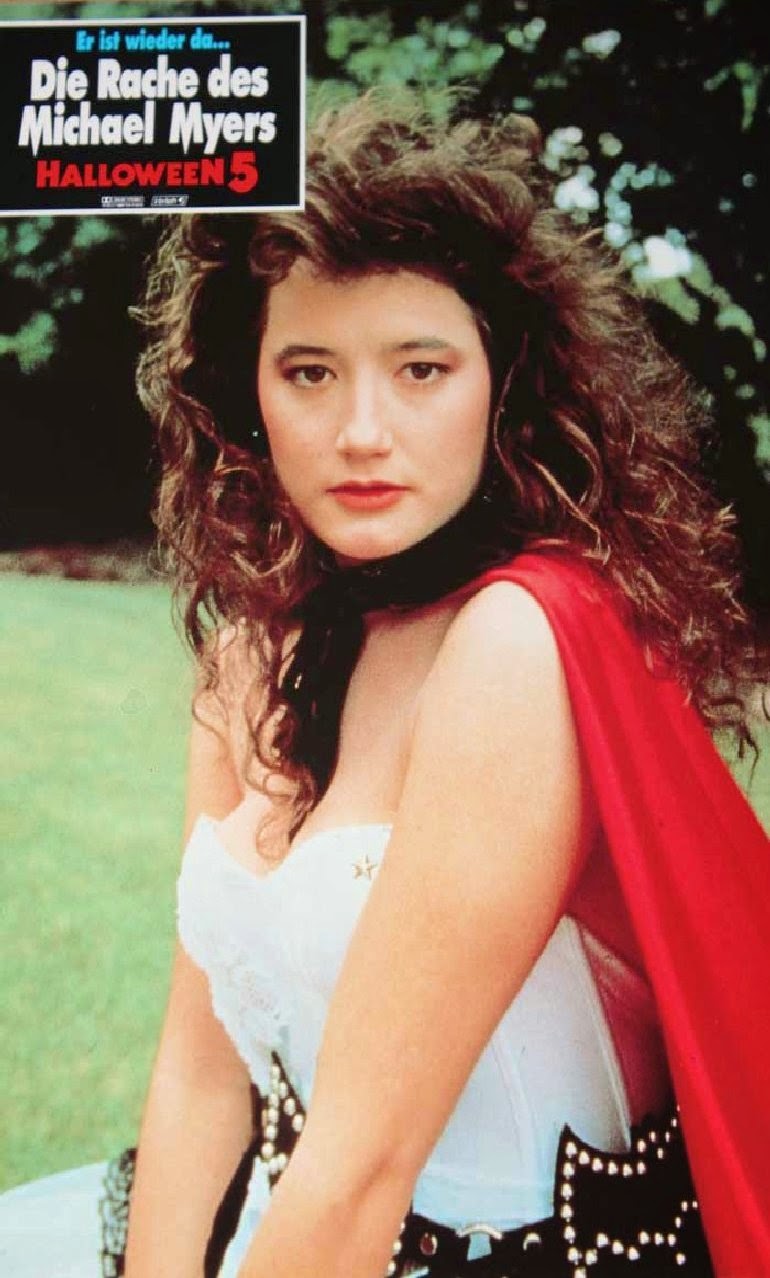
Wendy Kaplan as ‘Tina Williams’
With principal photography on Halloween 5 kicking off in Salt Lake City, Utah a mere five months before the film’s scheduled release, and script changes occurring consistently throughout production (in fact the script itself wasn’t complete when cameras started to roll), Kaplan recalls that set life too played fast and loose.
“It was a festive group of people,” Kaplan, who portrayed Halloween 5’s (“I’m never sensible if I can help it!“) ‘Tina Williams’ recalled. “It was pretty fun. You can imagine yourself at twenty-three years old, which is how old I was when I made the movie. We were all young actors, excited and on location, and we were crazy.”
Touched on in the bonus feature Dead Man’s Party – The Making of Halloween 5 contained in Anchor Bay and Shout Factory’s 15-disc Halloween Blu-ray box set, Kaplan alluded of the after-hours festivities, which included makeup effects artists Robert Kurtzman, Greg Nicotero and Howard Berger of K.N.B. EFX Group (a trio known then for not only their exemplary FX work, but also their penchant for the Sunset Strip’esque revelry of the late 80s), “It was like summer camp. We didn’t have phones or the internet to muck it up. And the party sort of followed the three of them. That sort of rock star thing. Everybody was just sort of trailing along.”
“We were doing night shooting,” she continued, “and then we would come home to the hotel at daybreak and have a party in somebody’s room. And I felt kind of terrible for the other guests, but I was like, ‘Oh my god, this is your typical Hollywood kind of scene.’ I don’t know that we trashed a room, but we would hang out a lot. Even at night we would come home and hang out in this little Salt Lake City hotel bar and ask the bartender to turn up the music, and we would dance. It was fun. I guess every set has that kind of feeling.”
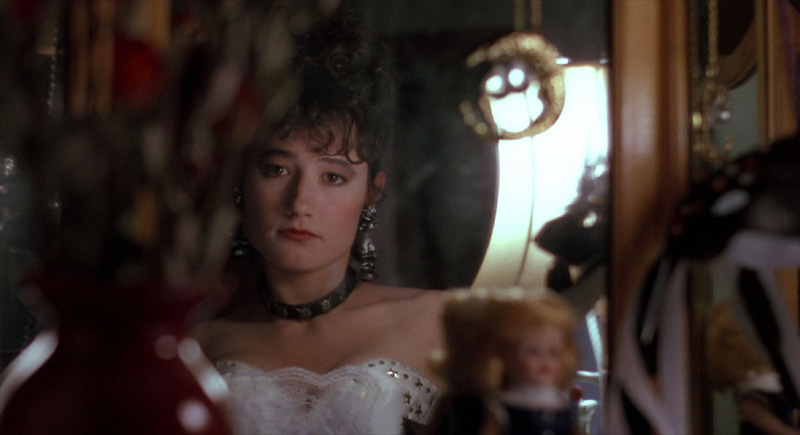
Wendy Kaplan as ‘Tina Williams’
As for her character in the film, conversation turned then to her rather nebulous fate: while indeed stabbed by The Shape (actor Don Shanks) in the third act, she’s never shown definitively as having perished. Was this intended as a set up for Kaplan’s potential return for a Halloween 6?
“I think in the original screenplay it was never really clear what happened to my character,” Kaplan offered. “You know, Tina saved Jamie in the script, but there was no like, ‘Tina’s dead or Tina’s alive, or ‘Jamie goes and visits Tina in the hospital,’ sort of thing. I think it was very open ended, what happened to Tina. And I think that it may have been based on me signing a contractual clause that said I would do a part 6, but my agent didn’t want me to sign it. So, the producers I guess kind of left it open. It could have been that they wanted to hire a whole new crop of people, because I know we were probably a pain in the ass for Moustapha. We were a little crazy when we were shooting Halloween 5. But I do know I didn’t sign on for 6, because my agent was like, ‘Well, it’s really good for you to do Halloween 5, and it’s a significant role in a movie, but it is a horror movie, and we don’t want to make any more commitments.’ But I wound up going back to New York in 1990 and doing a bunch of theater, so it didn’t really have any bearing on anything anyway.”
With the narrative fluctuating as director Girard improvised aspects of the Halloween 5 story-line, and with whole sections missing from the theatrical cut, including the massacre of the Haddonfield police force at the hands of the mysterious Man in Black, Kaplan commented, “I felt that things had to be missing (from the film). They shot in that jail location for a long time, and in the film it’s just Michael sitting in a jail cell, with his mask still on. I was really surprised by that.”
Regarding the heavily edited first act scene featuring Tina and Rachel (as portrayed by actress Ellie Cornell) and an introduction to (as originally posited) a BMX bike-riding Billy Hill (actor Jeffrey Landman), Kaplan recalled, “I think that we had more to say to each other in that scene where we’re walking. There’s actually a lot more to it. I mean, I guess it just went on forever and they cut a lot of it. Which I don’t blame them, I guess. And the script, it kept changing.”
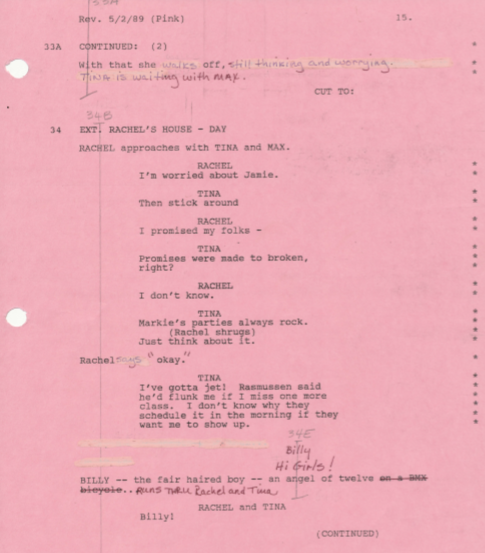
From the Trancas vault, Page 38 of the Halloween 5 Shooting Script, dated 5/2/1989.
Thirty-one years after the film’s release and six films later, and with an ever-growing international fan-base surrounding the franchise, Kaplan mused of her place in the genre, “It’s meaningful and it’s heart-warming. I really appreciate that people for whatever reason really gravitate towards the movies. And also towards Tina, for whatever weird and polarizing character that she is. I never expected that. I just was tagged in an Instagram post that said, ‘Tina’s the best character in the whole series!’ When people say things like that, it’s sweet. It’s a crazy character that came out of me years ago, and people are still kind of, you know, loving or hating her. I guess we all have the power to effect people.”
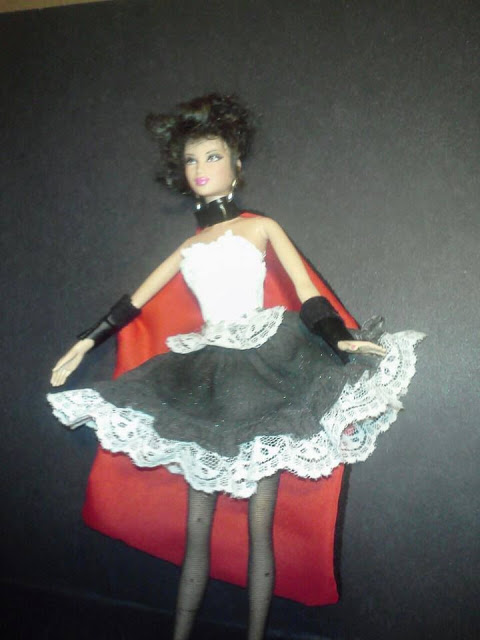
Fan-made doll of Halloween 5’s Tina Williams by Heath Newman
“With all of the stuff going on in the world right now,” the actress concluded, ”if people have a few moments where they can sit down and watch a horror movie, and they can release some of their fear, then that’s a great thing. I feel like a lot of people have come up to me at conventions and have said, ‘Tina made me feel that it’s okay to be who I am, and that it’s okay to be me.’ And I find that to be the best thing that anybody could ever say to me. Because I didn’t expect that this movie would impact the lives of people. The idea that people can feel like they can express themselves because they watched Tina in the movie is just great, because I feel that way about that character. People should be able to be themselves, and to actualize themselves, and to feel okay. Like, if these people are doing it, then I can do it too. I can be who I need to be.”
Exclusive Interview: Halloween 5’s Don Shanks Speaks! – Part 3
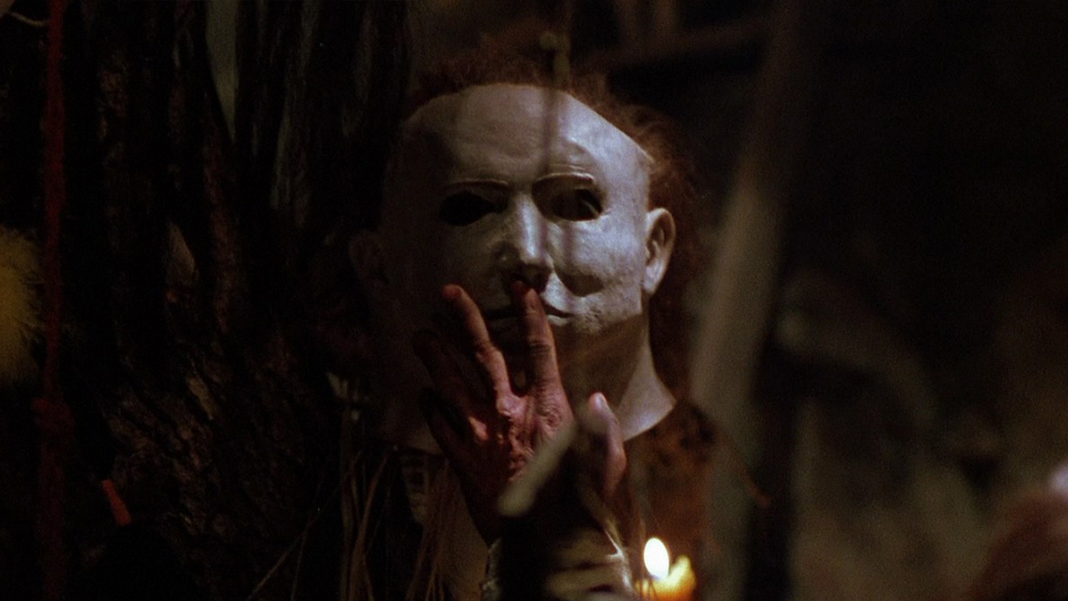
In 1989, director Dominique Othenin-Girard’s Halloween 5: The Revenge of Michael Myers polarized Halloween fans. From the introduction of the character of the Man in Black and the early beginnings of The Cult of Thorn mythos to a psychic connection between uncle and niece, this fifth film in the franchise (and the fourth which followed the iconic character of the babysitter-slashing Myers, who first found fame in originator John Carpenter’s seminal 1978 horror classic Halloween) was indeed a departure from its predecessors.
But what of the man who donned the infamous coveralls and mask for this fifth entry? Thirty years since its release, we caught up with stuntman and actor Don Shanks to discuss his experience, and touched on topics ranging from the film’s deleted scenes to working with young lead Danielle Harris, as well as his prolific career in the film and stunt industry, navigating Hollywood as a Native American, and a whole lot more.
Commencing with his role of Indian brave Nakoma in the 1974 film The Life and Times of Grizzly Adams, and kicking into high gear in 1977 in the hit television series of the same name (you can dig deep into that in Part 1 of our interview series here), prior to assuming The Shape’s mantle Shanks had cut his teeth on an entirely different slasher film, the 1984 flick Silent Night, Deadly Night (you can dig into that in Part 2 here, as well as his recollection of shooting the infamous ‘lost’ “Dr. Death” scene from Halloween 5).
As for Halloween 5: The Revenge of Michael Myers itself? With principal photography kicking off in May of 1989, a mere five months before its scheduled release on October 13th, 1989 (in a year already saturated with slasher sequels, including Friday the 13th VIII: Jason Takes Manhattan and A Nightmare on Elm Street 5: The Dream Child, along with dozens of other hopeful contenders), Shanks didn’t have much time to prepare for the role – or to prepare for the evening on which series regular Donald Pleasence accidentally broke his nose with a two by four, either.
Shanks recalled of that spring night in 1989 in Salt Lake City, Utah (where the majority of principal photography took place), “(It was our fault that) we didn’t let Donald know. The board we were using was foam, but it had a piece of PVC in it, and so as long as you hit with the right side of it, you’d be fine. But if you hit with the other?”
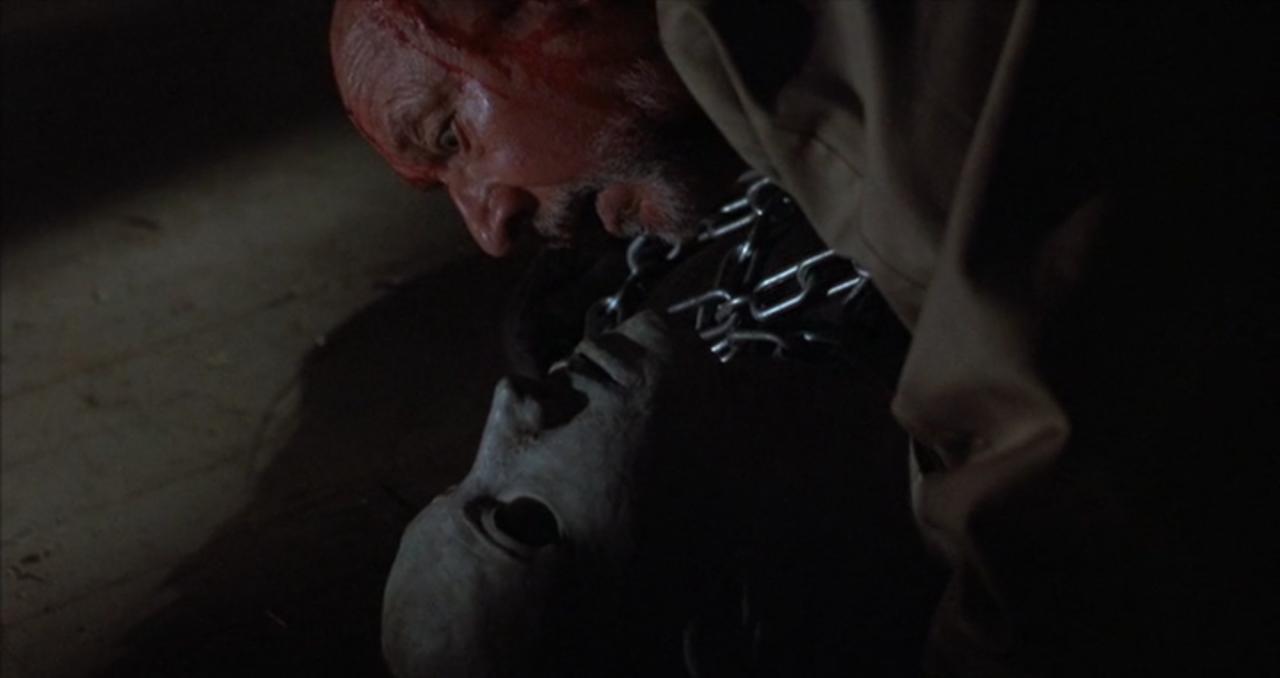
Don Shanks and Donald Pleasence in Halloween 5: The Revenge of Michael Myers
“He was getting tired,” expounded Shanks of Pleasence and the scene, which finds the actor’s character of Loomis dropping a chain net onto Myers before striking him repeatedly, “and he caught me (with the prop), and blood was running out of my mask, and (stunt coordinator) Don Pike ran over asked if I was OK. I said that I was, and not to worry about it, and not to say anything (to Pleasence). But the next day my eyes were black, and that’s a pretty good sign that you broke your nose.”
Aside from that unfortunate incident, Shanks recalls that working with the actor, “Was great. That scene where we were on the staircase (in the Myers house) and he’s talking to me – I swear I was getting lulled by his voice. It’s almost hypnotic, just listening to him. And (even at his age) he wanted to do all his own stunts. So when I slam Loomis into the window (in the film)? That was actually Donald Pleasence.”
A famously committed actor, the classically trained Pleasence’s desire for authenticity was additionally illustrated in his request to Shanks for him to remain on set – for a scripted scene in which the latter doesn’t appear.
“They were to shoot the scene which takes place right after I wreck the car (at the Tower Farm), and they had wrapped me for the night,” remembers Shanks. “And there was a knock on the door and I answered it. It was Donald and he said, ‘Might I impose on you? I have to shoot the scene where I’m talking to you and I won’t see you, but I just want to know that you’re out there. Would you mind?” I’d already wrapped for the night, but I was like, ‘It’s OK. Cool.’ So I was out there in the trees when he’s saying, “If you want to get rid of this rage, Michael, go home. Go home. Go to your house.’”
Shanks also holds fond recollections of the film’s young lead Danielle Harris, who had returned to reprise her role of Jamie Lloyd in Halloween 5, which she’d originated in its predecessor.
“I thought she was a trooper,” effused Shanks. “I mean, for eleven years old, she was like a little person. She was always there, and she always wanted to do her own stunts.”
One of those stunts required Danielle’s character to be marauded by Myers while trapped within a metal laundry shoot, while The Shape stabs violently through it with an actual butcher knife.
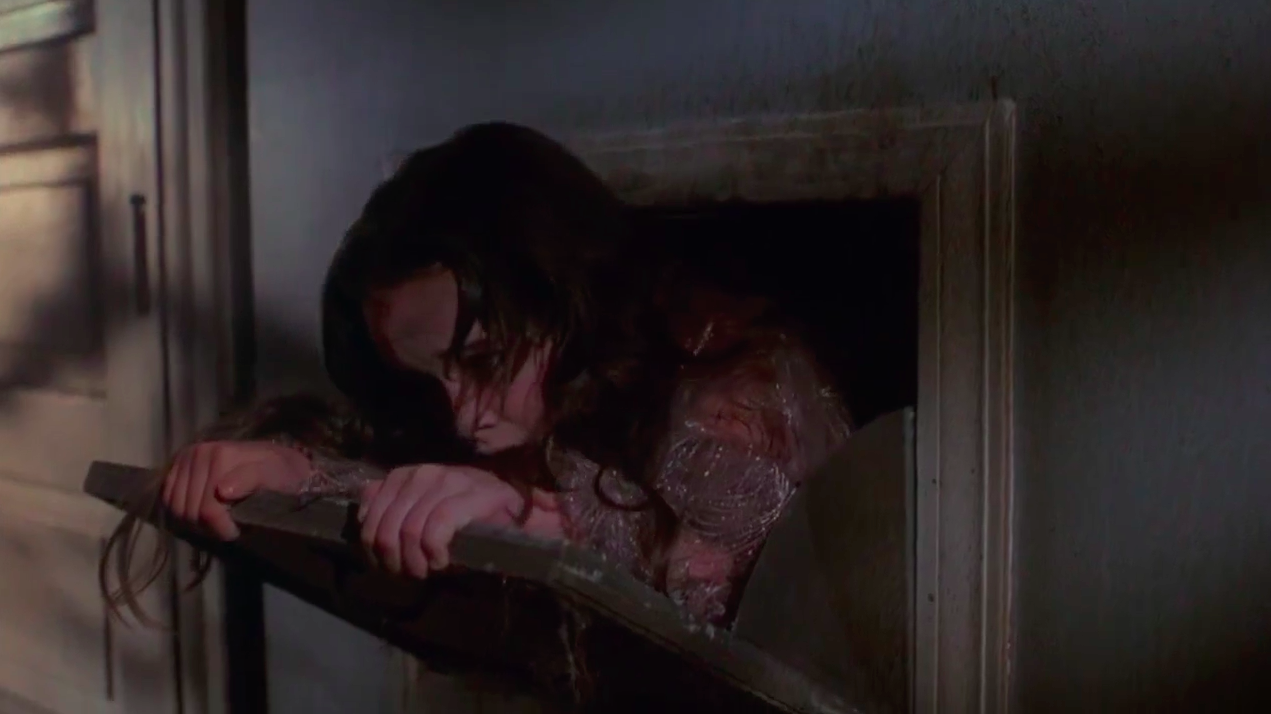
Danielle Harris in Halloween 5: The Revenge of Michael Myers
“That whole thing, she wanted to do it,” offered Shanks of the sequence, “And I was stabbing blind. I couldn’t see where she was. So we worked it out, and I put marks on the inside where she had to be, and I would stab through it.”
“Even when we were doing the chase (at the farm), she wanted to be there. I was tearing up the place in that car (with her running in front of it), and there was so much fog!”
Inarguably one of the more visually arresting moments of the film, the scene finds Myers, having previously dispatched the character of Mike and having stolen his prized 66’ Camaro, chasing down not only Harris, but actors Jeffrey Landman and Wendy Kaplan (the latter in the role of Tina Williams) in it. And as Shanks tells it, it was for Kaplan that things got a bit dicey.
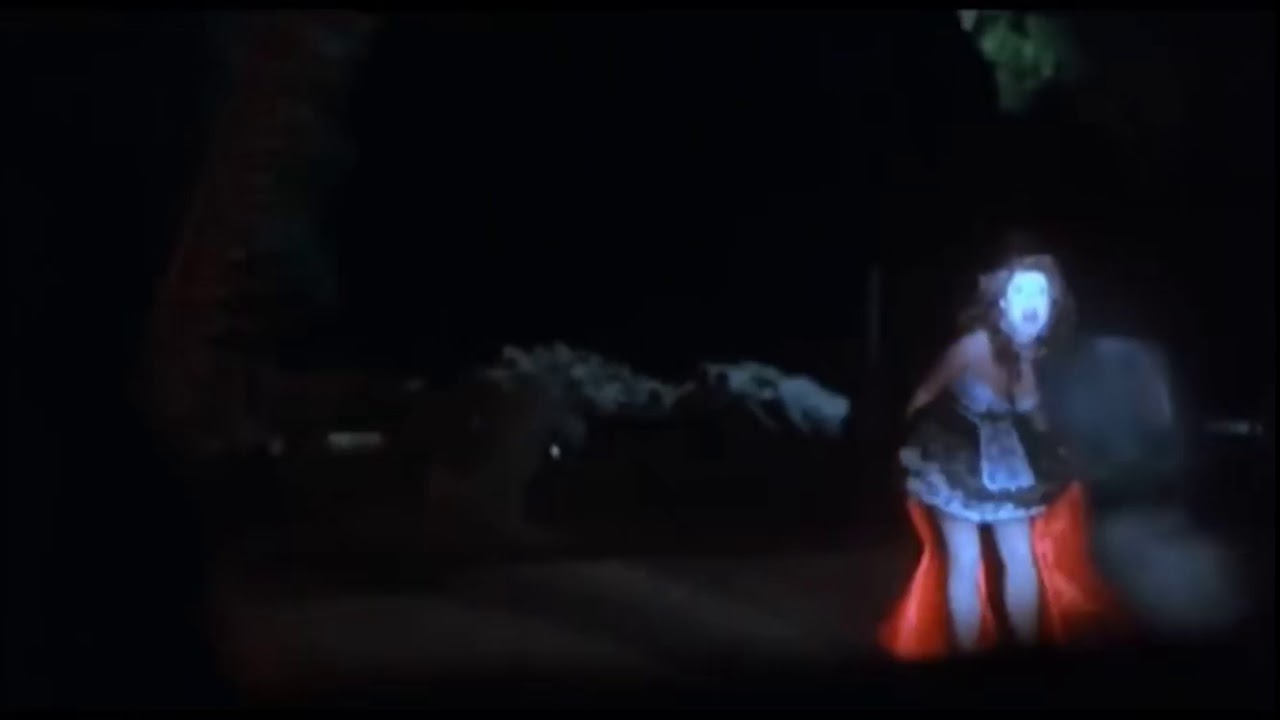
Wendy Kaplan in Halloween 5: The Revenge of Michael Myers
“Well, we had very few doubles,” Shanks said of the production’s apparently anemic approach in hiring stunt people, “(and for that scene) we were using the car for lighting. (Cinematographer) Rob Draper was in the back seat, and we had the headlights on Wendy and we were chasing her, so we had to be fairly close. So we had done it three times, and she asked Rob between takes, ‘When does the camera see my face?’ And Rob said, ‘Well, I really don’t see it.’ So, I think it was on the fourth take that she turned towards us (during the chase), and when she did she stepped on her cape, and it pulled her down and screamed. My heart was jumping out of my chest. I said, “My god!” and slammed on the brakes. I put it right on top of her. I didn’t run over her, but I could have. And I was like, ‘What are you doing?’ And she said, ‘Well, I want them to see my face.’ I told her, ‘It’s not worth getting killed over!’ But she was a trooper too. They all were!”
“There’s one shot (though from that sequence) that I wish I had,” said Shanks, “where I had the mask on, and there was so much fog that it was coming out of the eye holes.”
Having previously dived into the “Dr. Death” alternate opening, conversation then turned to the other ‘lost’ footage from Halloween 5: the long rumored SWAT team massacre at the hands of Myers.
“Oh, I took out Haddonfield’s SWAT team,” confirmed Shanks. “I killed a whole bunch of people.”
Expounding of the filmed scenes, “They took place at the hospital, the place where Danielle’s character left from,” he offered of the location in Orem, Utah which stood in for Haddonfield Children’s Clinic. “If you remember, the police get on the radio (in the film) and they say, ‘He’s here,’ and the whole SWAT team (which is stationed) at the Myers house gets in their cars and they drive off, and there’s one guy left up (in the house) with Danielle in the bedroom, and then there’s one guy down below in a police car (on the street), and over the radio he hears people screaming. So that’s where the (SWAT massacre) scene was to be – just before that.”
Of the extent of the sequence, Shanks said, “Well, I think we didn’t spend that much shooting it, because it was mostly second unit, with Don Pike directing instead of Dominique. So we were doing it fast.”
Speed of set-ups aside, Shanks does indeed recall the kills.
“There’s one guy, and I mean they show it, when they’re taking out one of the bodies, whose head is twisted around,” recalled the actor. “They put the wardrobe on him backwards, and he looks like his head’s been twisted one hundred and eighty degrees. And another, the direction was, ‘Take an M16 rifle, and you’re just walking through these guys and killing them.’ There’s Donre Samson, a big tall black guy that I kill, and another one, I put the M16 through his head, and another guy, I break his neck and stomp on him, you know. The whole idea was that you’d hear everybody screaming (over the radio) when he’s killing everybody. So we did all these really quick shots. You know: ‘Pick this guy up. Knock this guy down. Stab this guy.’”
In addition to the body count Shanks racked up in Halloween 5 as The Shape, he additionally tallied up a few as the film’s other antagonist, the nebulous Man in Black, a character whose identity and connective tissue had yet to be determined at the time of filming.
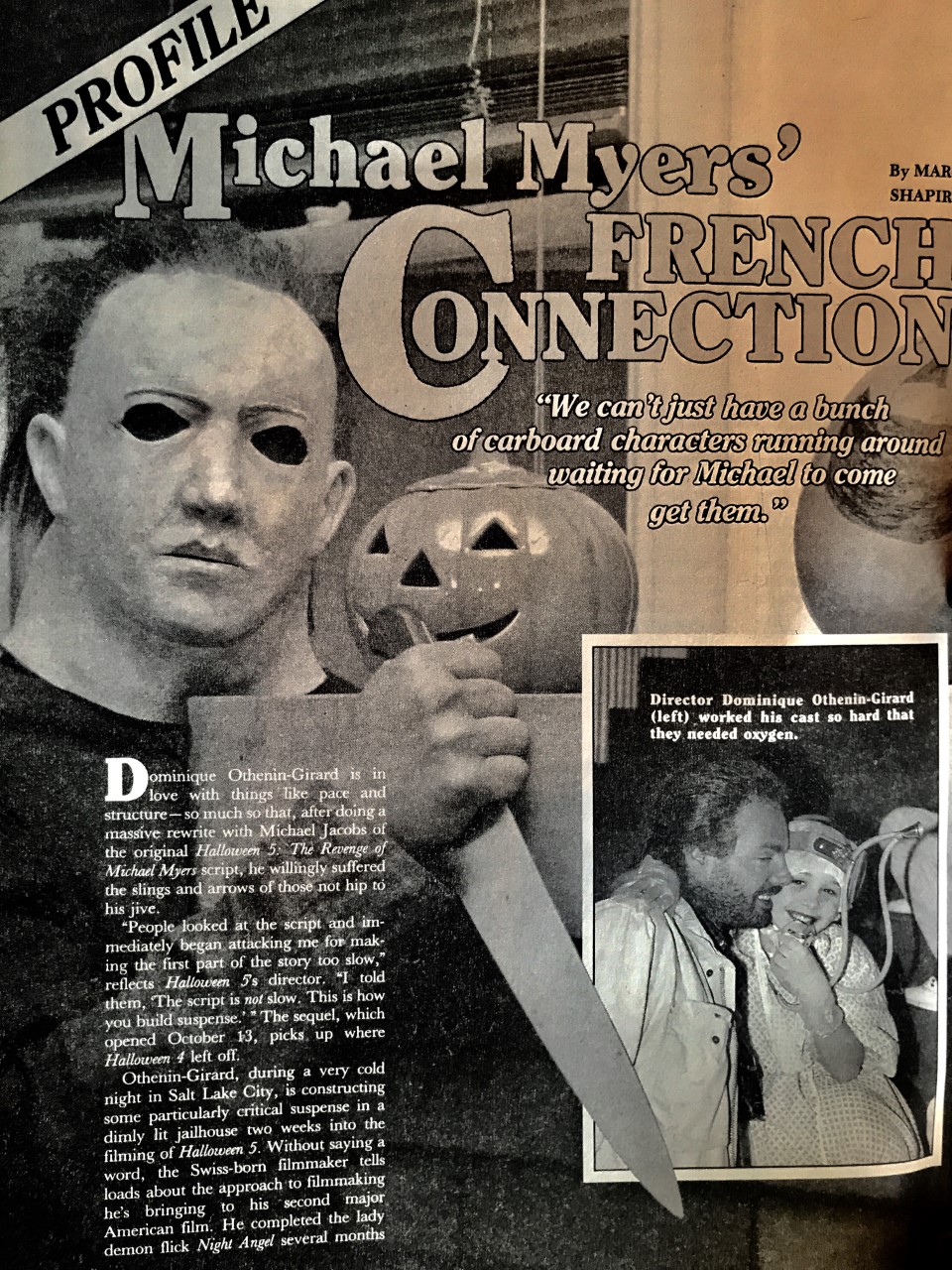
Gorezone Magazine. January 1990. Issue #11.
“Well, I wasn’t sure where they were going with that,” said Shanks of the conceit, “because in the scene where Danielle’s in the coffin, we were shooting stuff where I didn’t have the Myers mask on. And I was asking (executive producer) Moustapha (Akkad) about it, and he was like, ‘I’m not going to use the footage here, I’m going to use it later.’ So my thought was that in Halloween 6 that they’d cut back to scenes that were in Halloween 5 that would show that the Man in Black (and Myers) were the same person. Because later (after production) when Moustapha had called me and said, ‘We’re thinking about doing Halloween 6, and we would like you to go out and promote part 5,’ he also said, ‘but don’t say anything about the Man in Black.’”
And while Shanks would not return to reprise either role in 1995’s Halloween 6: The Curse of Michael Myers (those would go to George P. Wilbur and Mitchell Ryan as Myers and the Man in Black, respectively), the actor said of working with Halloween 5’s director Othenin-Girard (whose unique stamp on the franchise forced many a challenge for its immediate follow-up), “If you look at Halloween 5, it has certain artistic qualities to it, which is what he brought to it. You know, there’s little inner meanings and nuances, that when you watch it, aren’t in the other ones. Like the “Dr. Death” scene: the occult items (in it) happened through Dominique. He’d gotten in touch with (local) witches to get them, and he wanted it shot on a certain day, or it had to be a certain date, I don’t remember which. But numbers were a big thing with him for some reason. His (hotel) room even had to be have certain number, and his bed had to face a certain direction.”
“And that’s just what Dominique did.”
As for what Shanks, now sixty-nine years old (and surprisingly still fit, regardless of the spinal fractures he endured as a stunt man in the 80’s) is up to, “I’m still riding horses,” he said. “I have one friend, and she’s been doing horse rescues and stuff, and so I help her train the horses. You know, just taking it easy.”
“Although,” he added, “She did just start doing Mongolian archery. That’s where you shoot targets with a bow on horseback.”
“I think I might try that.”
Exclusive Interview: Halloween 5’s Don Shanks Speaks! – Part 2
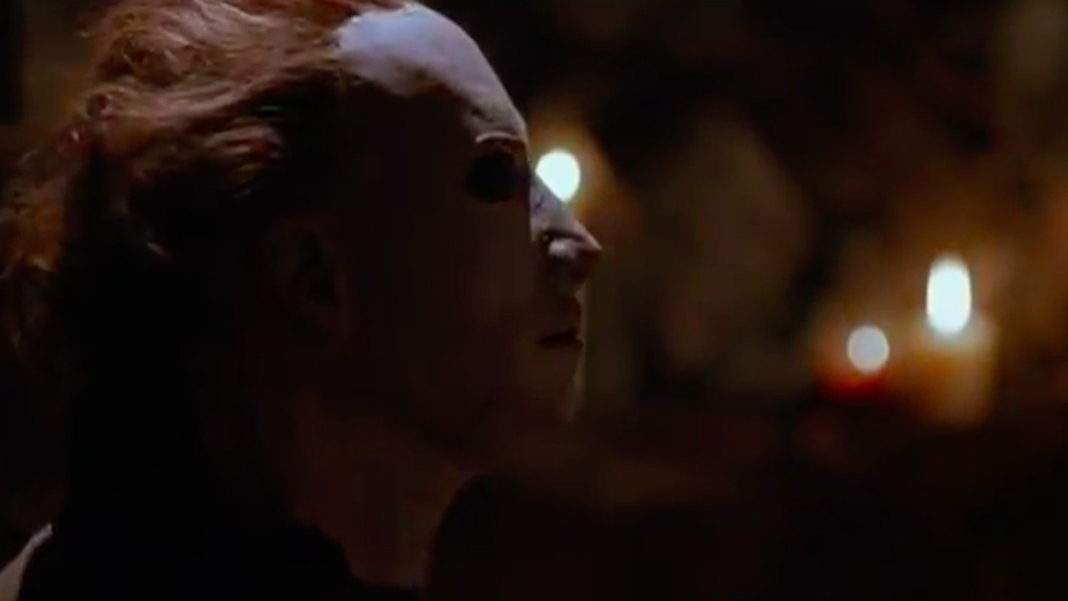
In 1989, director Dominique Othenin-Girard’s Halloween 5: The Revenge of Michael Myers polarized Halloween fans. From the introduction of the character of the Man in Black and the early beginnings of The Cult of Thorn mythos to a psychic connection between uncle and niece, this fifth film in the franchise (and the fourth which followed the iconic character of the babysitter-slashing Myers, who first found fame in originator John Carpenter’s seminal 1978 horror classic Halloween) was indeed a departure from its predecessors.
But what of the man who donned the infamous coveralls and mask for this fifth entry? Thirty years since its release, we caught up with stuntman and actor Don Shanks to discuss his experience working on the film, and touched on topics ranging from the film’s alternate ‘Dr. Death’ opening and deleted scenes to working with young lead Danielle Harris, as well as his prolific career in the film and stunt industry, navigating Hollywood as a Native American, and a whole lot more.
Commencing with his role of Nakoma in the 1974 film The Life and Times of Grizzly Adams and kicking into high gear in 1977 in the hit television series of the same name (you can dig deep into Shanks’ beginnings in Part 1 of our interview series here), Shanks told us that prior to Halloween 5 he’d cut his teeth on an entirely different slasher film, the 1984 flick Silent Night, Deadly Night.
“I was in that film quite a bit,” Shanks offered of the movie, which went on to generate four sequels and the 2012 loose remake Silent Night. “A friend of mine was the stunt coordinator on it and he brought me on to double the Santa.”
Directed by Charles E. Sellier, Jr. (who Shanks had worked with on the Adams films and television series years prior), Silent Night, Deadly Night was written by Paul Caimi, and revolves around the character of Billy, who after seeing his parents murdered as a child at the hands of a Santa Claus suit-wearing criminal, goes on a Yuletide spree-killing of his own some years later.
Cashing in on the holiday-themed slasher craze of the time (its predecessors included Bob Clark’s underrated 1974 film Black Christmas and of course 1978’s immensely successful Halloween, as well as their imitators My Bloody Valentine, Friday the 13th Part 2, The Burning and dozens of others), the production too decided to give their killer a narratively related look. Thusly, Silent Night, Deadly Night’s Billy was presented as a none-too-family-friendly axe-wielding Saint Nick, much to the outrage of parents everywhere.
“Everything with the axe was me, and I did all of the stunts required of Santa Claus,” recalled Shanks of his work in the film, which also required him to double many of Santa’s victims as well, “and (often) we were using real axes.”
Of one of those moments when Shanks was asked to use an actual edged weapon, “We were doing one scene with Linnea (Quigley) where she runs to the telephone and (the character of) Billy throws his axe at her, and they wanted me to cut the telephone cord next to her with the axe,” Shanks offered. “I said, ‘That’s a little too close to her for me. There’s a snowman (decoration) right next to her. Let me throw it at that.’ So I first did it with a rubber axe, which didn’t stick and just knocked the fake wall down. So they fixed the wall, and I did it again, and the second time the axe splitt the snowman and it stuck (in the wall).”
“After the take Linnea said, ‘That was really amazing!’” recalled the actor. “And I said, ‘Well, you know I throw knives and tomahawks.’ And she said, ‘Yeah, but how do you get a rubber one to stick in the wall?’ And I said, ‘The second one wasn’t rubber! They didn’t tell you that I was going to be throwing a real axe at you?’ And she said, ‘No, they didn’t.’”
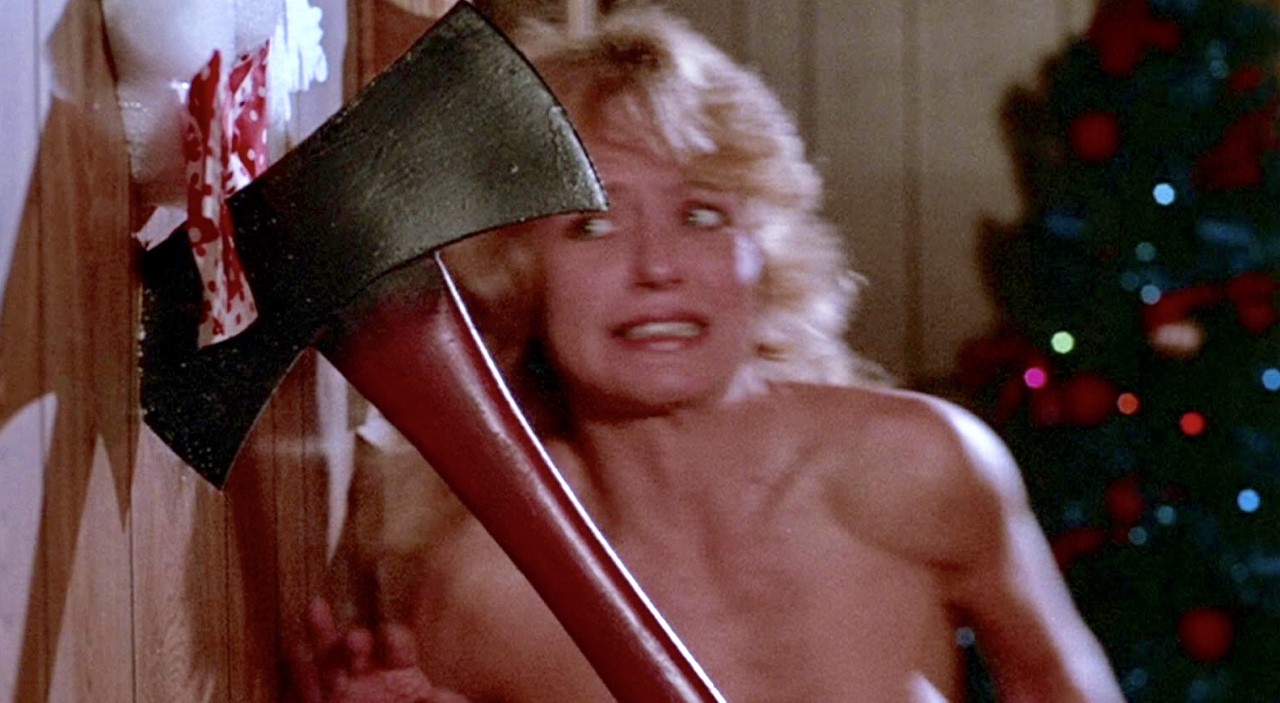 Linnea Quigley in Silent Night, Deadly Night.
Linnea Quigley in Silent Night, Deadly Night.
As it turns out, scantily-clad women weren’t the only ones on Santa’s “naughty list” in Silent Night, Deadly Night.
“In another scene, this kid steals a toboggan and is sledding down a hill,” continued Shanks. “So we had a stunt guy wearing a prosthetic head double the kid, and we put a ghost neck on the top of his own head and built his shoulders up, and I took the real axe and cut his (prosthetic) head off with it. So like I said, we were using real axes.”
Such holiday mayhem was the cause of much controversy on November 9th, 1984, when the film was released to theaters. Lambasted by critics and picketed by parental groups for its content (and television trailers, which aired during hours of family-friendly programming), the TriStar film was pulled from theaters six days into its release. (Wes Craven’s A Nightmare on Elm Street was incidentally released the same day – to less vitriol and far more fanfare).
In the years following Silent Night, Deadly Night, Shanks found work in the television films Louis L’Amour’s Down the Long Hills and Stranger on My Land, as well as the television series Werewolf, before landing the role he’s most known to genre fans for: that of The Shape in 1989’s Halloween 5: The Revenge of Michael Myers.
Of that casting, Shanks recalled, “What it was, was that I had worked with stunt coordinator Don Pike. We had done a CHiPS episode together and had become kind of friends, and then later I was here in Salt Lake City, and he called me and said, ‘We’re doing this movie and I wanted to know if you were available to do stunts.’ I go, ‘Yep, sure.’ And so he calls me back ten minutes later and says, ‘The director would like to talk to you.’ I asked, ‘About doing stunts?’ He says, ‘Well, we’re doing Halloween 5 and we’re considering you to play Michael Myers.’ I go, ‘That’s cool.’ So I went in and talked to (the director) Dominique, and after a little bit he says, ‘I want you to walk for me like wood through water.’ I thought about it for a minute, and then I did it, and he said, ‘OK, perfect.’”
“And that’s how I got the role.”
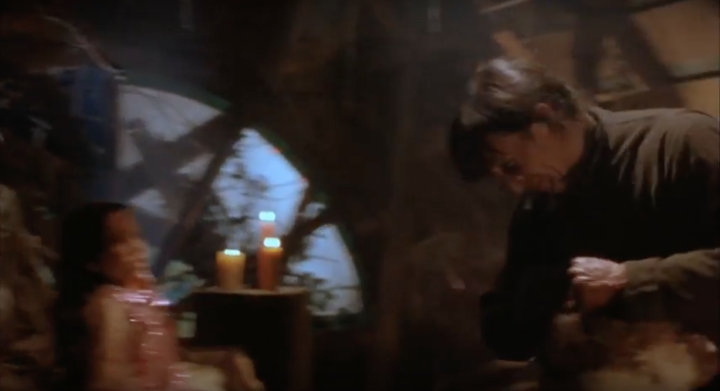 Don Shanks Unmasked in Halloween 5: The Revenge of Michael Myers
Don Shanks Unmasked in Halloween 5: The Revenge of Michael Myers
With its predecessor Halloween 4: The Return of Michael Myers having released to box office success in October of 1988, the series’ producers were eager to duplicate that with an October 1989 follow-up, and thusly, Halloween 5 was moved quickly into production. Ideas pertaining to the continuation of the storyline varied wildly. A first draft by Shem Bitterman followed Alan B. McElroy’s established conceit and found the character of Jamie Lloyd to have become pure evil, following the stabbing of her stepmother in the finale of Halloween 4. That concept was however rejected by producer Moustapha Akkad, who felt that fans’ interest lay in the story of Myers (given the box office disaster that was the Myers-less Halloween III: The Season of the Witch, his concerns were warranted). Ultimately, writers Bitterman, Michael Jacobs and director Othenin-Girard all found writing credits on the shooting script, in a story which picked up directly where the previous film had left off: with Myers falling into a mine shaft beneath a hail of gun fire.
“We started filming a week and a half after I got the script,” recalled Shanks of Halloween 5, which commenced principal photography in May of 1989 in Salt Lake City and its surrounding environs.
As originally scripted and shot, Myers, in true First Blood fashion, escapes via a fiery opening in the side of a mountain, and riddled with bullets floats down the river to the cabin of Dr. Death, portrayed by local Salt Lake City resident Theron “Uncle Thud” Read, in what has become one of the more discussed ‘lost’ scenes of the film franchise.
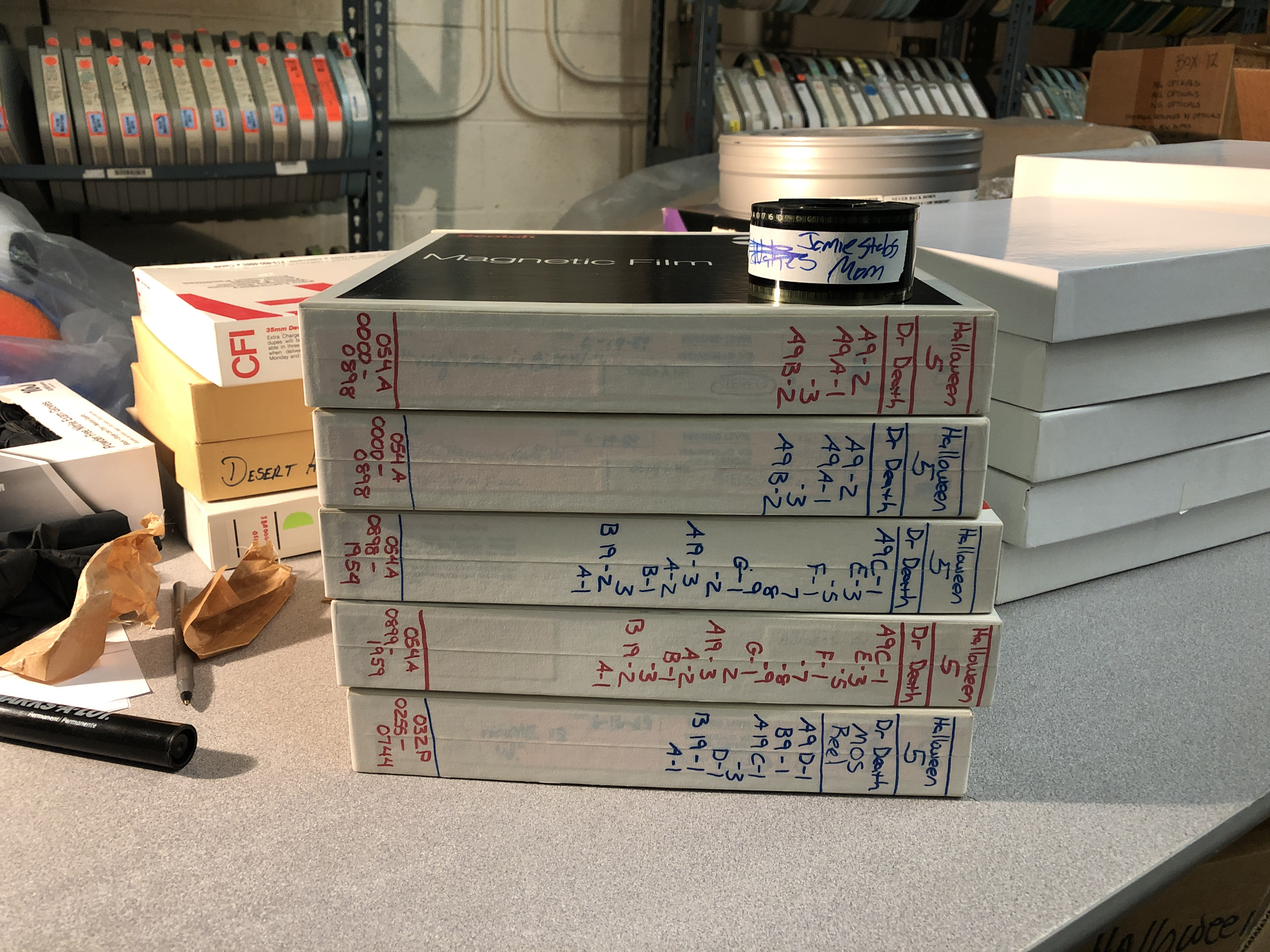 Writer’s note: It may not be lost.
Writer’s note: It may not be lost.
“He was a punk comedian here in town,” recalled Shanks of the actor, comic and fixture on the 1980’s SLC punk scene, who is most remembered for his role of Mark Bojeekus in the 1987 comedy Three O’Clock High, and who passed away on July 20th, 2009. “He had a Mohawk haircut, and was very, very emaciated looking.”
Of the scene, which finds The Shape being discovered by Dr. Death and subsequently brought into the cabin in which a resurrection ritual is conducted, Shanks recalled, “(I was) placed on this stone alter, and all around (the set) were things that the production had gotten from witches, and people that sell you the occult. And there were scrolls and different chants and this and that. And (suspended from) the altar, right above me, was this rock that looked like a stalactite – it was on a string and it would circle. And Dr. Death was doing an incantation on me, and then he tattoos on me the Thorn rune, which is the sign of eternal life. And so he does all these incantations, and on Halloween Eve (one year later) I come back to life.”
“So I put the mask on,” continued Shanks of the results of Myers’ not-quite-grateful response to his resurrection, “and I grab Dr. Death by the throat and pick him up over my head and break his back, and then put him on the altar, and take the stalactite and I go through his chest with it. I thought it was one of my better kills. But (later) Moustapha thought it was too much of the occult type thing. So they decided to shoot it differently.”
Gone was Dr. Death, now replaced by actor Harper Roisman who would in the theatrical release portray an elderly mountain man living in the same cabin (in a direct homage to 1935’s Bride of Frankenstein), as were any signs of the occult, with a talking parrot taking their place.
Of Reads’ performance as Dr. Death, “It was eccentric,” offered Shanks, “and if you saw it you would just go, ‘Wow, that guy looks really weird.’ But it kind of gave the film a little more of an artistic and avant-garde (touch). I mean, it worked perfectly. For what we were doing and the way the (occult) set looked, you want something that isn’t the norm. And the old guy, when we re-shot the opening, Othenin-Girard wasn’t even there. We shot that the last day (of production). I think it was (line producer) Rick Nathanson that directed it. Or it might have been (first AD) Kelly Schroeder. But I’m pretty sure Dominique was not there.”
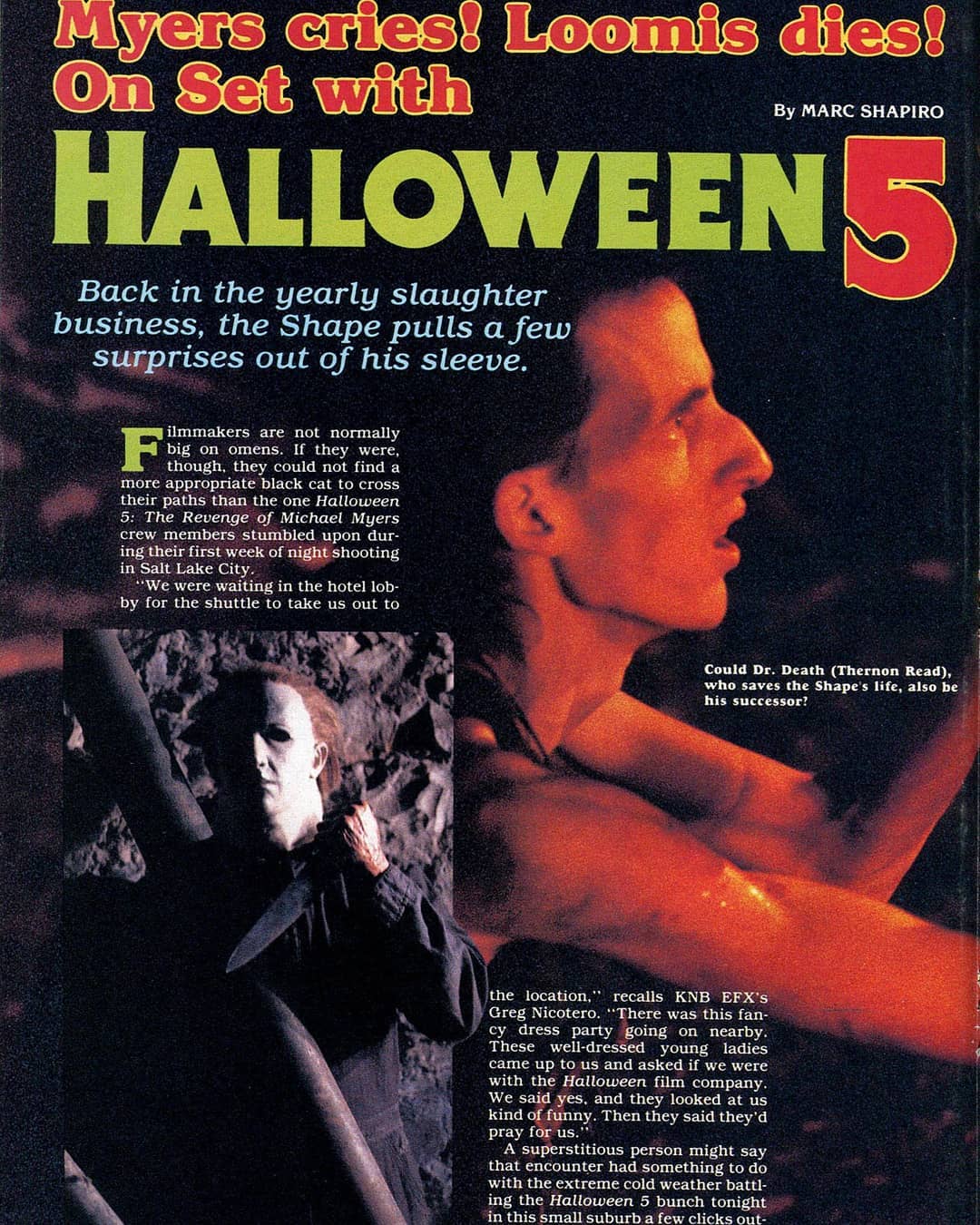 Fangoria Magazine. November 1989. Issue #88.
Fangoria Magazine. November 1989. Issue #88.
Other interesting changes to Myers included those that were visual, as evidenced by The Shape’s mask itself. As designed and provided by Robert Kurtzman, Greg Nicotero and Howard Berger of K.N.B EFX Group (who also served as the film’s special makeup supervisors), Myers’ visage took on an arguably more malevolent look than the ones which had preceded it.
“There were some changes to it after I’d been cast,” said Shanks of the mask. “I believe it had been sculpted off of a mold of Nicotero, and my head’s a little bigger than his. And then Moustapha thought that the nose needed work, so they changed that. And then we put makeup sponges underneath the neck so it would flare out more, because it form-fitted (without them), and it looked more like a face than it did a mask.”
“And then of course we had to change it again later after Donald Pleasence had broken my nose.”
In our upcoming Part 3, Shanks talks working with Danielle Harris and Pleasence (and his hearty swing) in Halloween 5: The Revenge of Michael Myers, those infamous ‘lost’ SWAT massacre scenes, a near fatal Camaro mishap, his introduction to the Halloween fan base, and much, much more.
Exclusive Interview: Halloween 5’s Don Shanks Speaks! Part 1
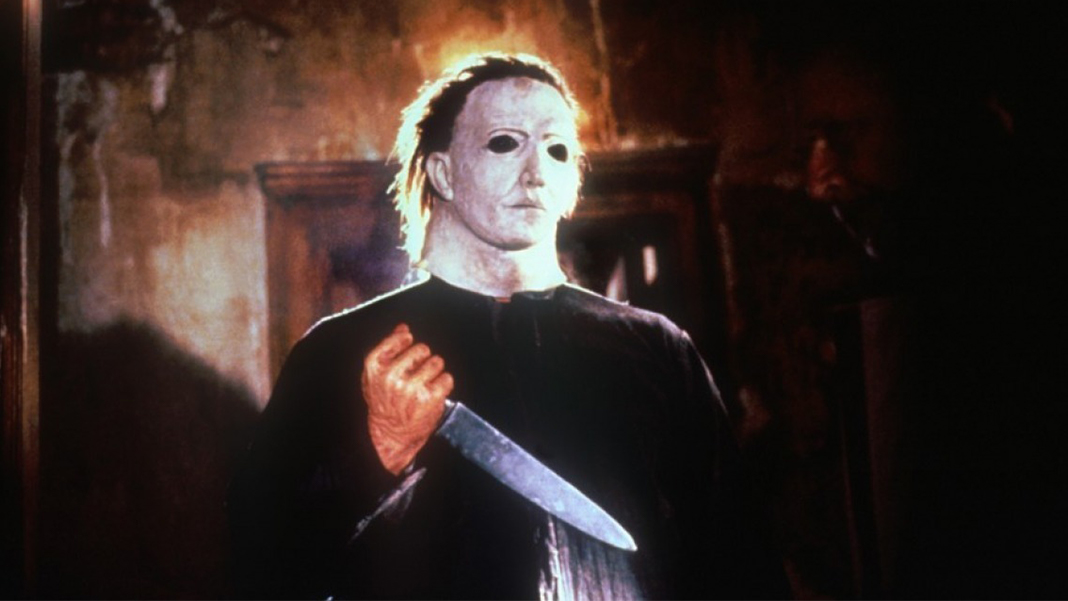
Love it or hate it, one thing which can’t be argued is the divergent path which 1989’s Halloween 5: The Revenge of Michael Myers took the franchise on. From the head-scratching introduction of the character of the Man in Black and the early beginnings of The Cult of Thorn mythos to a psychic connection between uncle and niece, this fifth film in the franchise (and the fourth which followed the iconic character of the babysitter-slashing Myers, who first found fame in originator John Carpenter’s seminal 1978 horror classic Halloween) was indeed a departure from its predecessors.
But what of the man who donned the infamous coveralls and mask for this fifth entry? Thirty years since its release, we caught up with stuntman and actor Don Shanks to discuss his experience working on the Dominique Othenin-Girard-directed film, and touched on topics ranging from the film’s alternate ‘Dr. Death’ opening and deleted scenes to working with young lead Danielle Harris, as well as his prolific career in the film and stunt industry, navigating Hollywood as a Native American, and a whole lot more.
Commencing with his role of Nakoma in the 1974 film The Life and Times of Grizzly Adams and kicking into high gear in 1977 in the hit television series of the same name, Shanks, now 69, recalls of landing the role of the young Crow brave (the first of many which paved his way to Myers) and of his entrance into the film industry, “I was twenty two at the time, and I was doing a play that required a lot of prosthetic makeup, and some people in the audience said that they’d really enjoyed my performance, as I was playing an old man.”
“About two months later I received a call from them that there was a movie in town that needed someone to work in prosthetic makeup,” he continued. “So I called the production, and they said, ‘We need a guy to be in makeup and wrestle a bear.’ And so I asked them, ‘Do you need any actors?’ They said, ‘Yeah, we are looking for an Indian in makeup and they’d have to wrestle a bear.’ And I told them, ‘Well, I’m part Indian and I’ll wrestle a bear.’ And that was my first film.”
Born February 26, 1950 in Piasa, Illinois, Shanks said of his childhood introduction to the world of cinema, “I grew up on a farm, and I’d watch these TV shows about the Old West and since I had a horse I learned to do all of the fancy mounts (the actors were doing on TV). And then when I was seven or eight, I saw a movie called The Crimson Pirate with Burt Lancaster, and since we had a barn I rigged it up like the mast of a pirate ship, and I would swing from it. I pretended to be a pirate, or a cowboy, or an Indian, and my Mom would say, ‘You’re going to break your neck doing that.’”
“I went on to make a living out of it,” Shanks chuckled, “starting with The Life and Times of Grizzly Adams.”
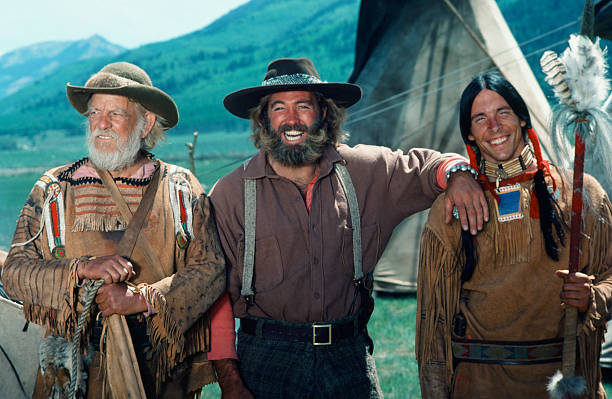
An initially storied production (as Shanks recalls, under financier/producer and Shick Electric mogul Patrick Frawley the film initially wasn’t completed), producer Charles E. Sellier, Jr. was brought on board with assistant cameraman Dick Freidenberg in order to save it (the latter was eventually bumped up to director). The resulting film was the seventh highest grossing release of 1974, earning $65 million worldwide off of a $140,000 budget.
“It’s still in the top five or ten highest grossing independent films of all time,” stated Shanks of The Life and Times of Grizzly Adams, which stars, as does the later network series iteration, the now deceased actor Dan Haggerty in the titular role. “And my role of Nakoma in that film led into an expanded role in the television series.”
Revolving around the character of woodsman Adams, an innocent fugitive from the law who lives in the wilderness and who helps passers-by in the forest with the help of his grizzly bear companion, the 1977-1978 period NBC series was comprised of thirty seven episodes, with Shanks appearing in thirty-six of them. And at the time, he was one of the few Native Americans working in the industry.
“It was starting to go into that trend,” said Shanks of Hollywood’s penchant for then casting Caucasion actors in roles written as Native American, as evidenced in such films as 1950’s Winchester ’73 (which featured Rock Hudson in feathered pigtails and face paint) and in 1953’s The Searchers (which featured actor Henry Brandon in the same). Television too wasn’t without its offenses: the popular 1970-1971 ‘Crying Indian’ commercials (which featured the weeping Iron Eyes Cody, in reality actor Espera DeCorti, whose descent was Italian and decidedly not Cherokee and Cree as he had claimed) similarly cast loose and fast.
“I have my family history, you know, to trace back,” mused Shanks, who is of Cherokee and Illini descent, “and if you were going to say you were Indian you had to have some proof. A lot of the Native Americans at that time weren’t educated. And so (one of the few actual Native Americans to) play many of those parts was Mohawk actor Jay Silverheels, who famously portrayed Tonto in the 1950’s The Lone Ranger television series. When he started out he did extra work, and they told him that if he could learn to read he could play speaking parts. So he learned to read through comic books. I mean, this is what I’ve heard. And so from that time on he started educating himself and trying to help other Native Americans.”
“Years ago they were going to do a remake of The Lone Ranger,” Shanks continued of the actor, and of the 1981 William A. Fraker-directed feature The Legend of the Lone Ranger, “and I was up for the part of Tonto. The only reason I wanted to play it was because Silverheels was going to play my (character’s) father. And I wanted to be in it because I really respected him.” (Writer’s note: Silverheels passed away on March 5, 1980 in Los Angeles, CA, and neither he or Shanks would appear in the film).
As for the impact his authentic portrayal of Nakoma in The Life and Times of Grizzly Adams had, Shanks offered, “A guy I knew once told me a story. He’d said that while his Native American cousin was dying of cancer that he’d told him he knew me, and that his cousin had replied, ‘Can you tell Don how much I thought of him in that role, because Nakoma didn’t take shit from anyone, and because he spoke in (correct) Indian dialect? When I watched that show as a kid, I’d pretend to be Nakoma.”
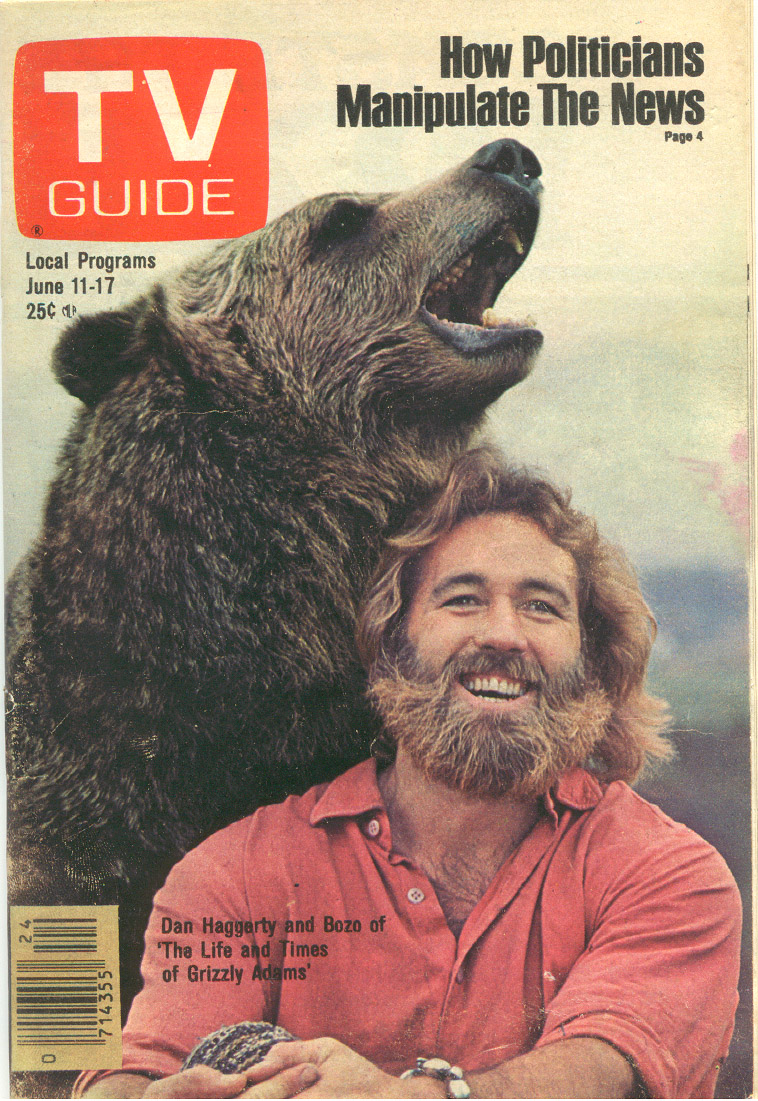
Regarding this, Shanks said of his determination to accurately portray the character, “At the time (the producers) didn’t understand why I wanted to speak in an Indian dialect, and it was also difficult because there’s a masculine and feminine gender in that language. That, and the Indian language had changed after the 1860’s, and the show was set in the 1850’s. So I had to find a way to translate the script into the right period dialect. So I found a lady up in Montana who would translate it from English to Indian, and then she’d send it down to me, and I’d have a man I knew translate her translation into the masculine Indian dialect. So, I tried to portray him as authentically as I could. It was that important to me.”
Shank’s portrayal helped rocket the NBC show to popularity with an impressive 32% market share during its run, although it would be a few years until Shanks and cast realized just how deeply the series had resonated with viewers.
“We had so many fan letters that we never got,” recalled Shanks. “Dan (Hagerty) was over at NBC one time, after the show had been over for I don’t know how long, and this lady there goes, ‘You want your fan mail?’ And he goes, ‘You have fan mail?’ She says, ‘Yeah. Have you got a truck?’ He goes, ‘Yeah, I got a pick up.’ She says, ‘No, do you have an actual truck?’ There were eight million fan mails that we didn’t get.”
Expounding, “I was working for scale and Dan was working for maybe $2,500 a week,” Shanks recalled, “and the producers on the show didn’t want us to really know how popular it was, because they didn’t want us to ask for more money. And they were running a scam too. The episodes were budgeted at $700,000 each, but they were shooting them for like $150,000 to $200,000 an episode and pocketing the difference. And there was also $139 million dollars of merchandising that we never received.”

Above. a 1978 merchandising tie-in: articulated Grizzly Adams dolls from Mattel.
“But you know what, we were having a good time (during production),” said Shanks of his then ignorance to the goings-on. “All the cast did was go out and make people happy (with the show) and have a good time, and I was just out of college and (even at scale) it was the most money I’ve ever made.”
Airing at a time when environmentalism had begun to flourish, much of The Life and Times of Grizzly Adams was shot on location in the mountains of Utah, Arizona and New Mexico, and contained several animal actors, one of which was the female grizzly Bozo, who portrayed the series’ Ben the Bear. Given this, the rugged locations and often rugged narrative, Shanks at times found more than just alleged shady dealings and the perfection of his character’s dialect to be of challenge.
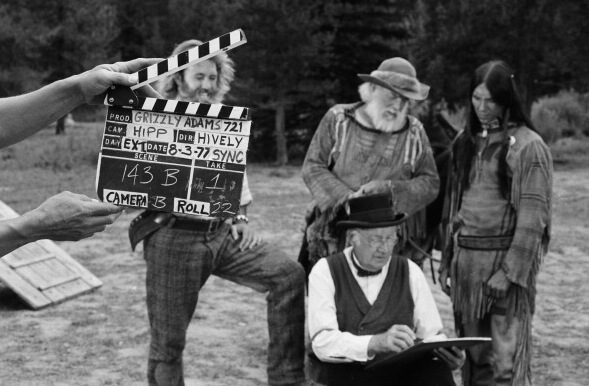
“Dan once cut off two of my fingers when we were doing a scene,” Shanks laughed of an incident on the set of the 1977 Grizzly Adams episode ‘The Search.’ “(Rawhide actor) Paul Brinegar played a trapper in it, and (cast member) Denver Pyle gets caught in a net and Dan and I are cutting him out (of it), and Dan cut off two of my fingers with his knife. It was my first index finger at the first knuckle and the middle finger at the second joint.”
His response to this rather harrowing accident?
“I went and had them sewn back on and I went back to work,” said Shanks. “I’ve never missed a day of work. I’ve had my back broken before and I came back to work.”
Of that accident, “(Years later) I was doing a picture in Atlanta that required a high fall,” Shanks recalled, “and the production had ordered a bag that was too big for what I was doing. Long story short, it bounced me out of it and I landed on my face and my heels hit me in the back of the head.”
When asked if he took time off from the mishap (which resulted in compression fractures to his second, third and fifth vertebrae) in order to heal, Shanks replied, “Never did. Never have. You’re gonna’ have to kill me to get me off the set.”
In our upcoming Part 2, Shanks talks re-teaming with Sellier for the 1984 Christmas slasher Silent Night, Deadly Night and dives into the production of Halloween 5: The Revenge of Michael Myers, those infamous alternate scenes, Donald Pleasence’s hearty swing, and a whole lot more.